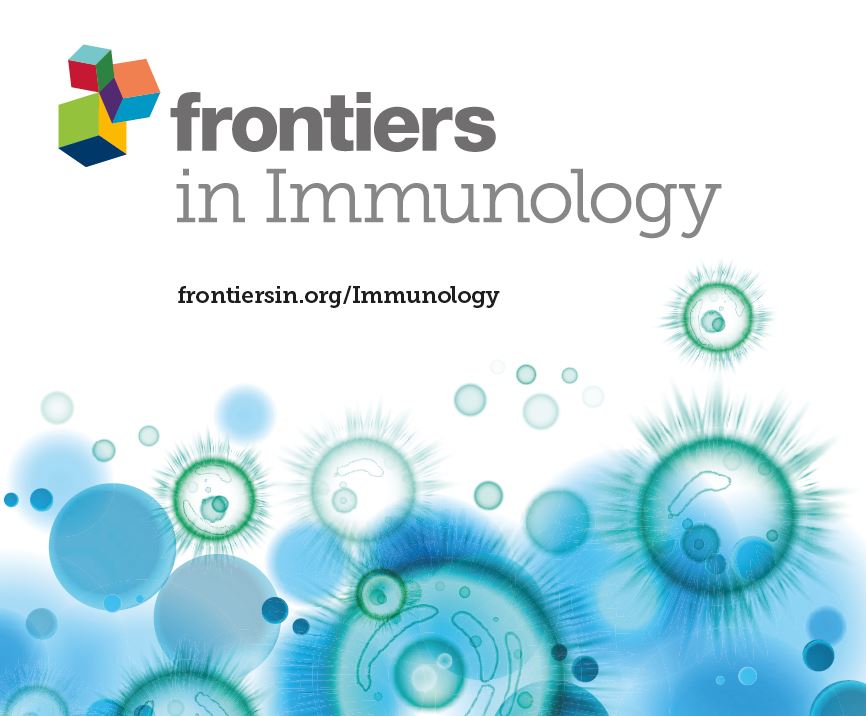The Pre-Transplant Non-HLA Antibody Burden Associates With the Development of Histology of Antibody-Mediated Rejection After Kidney Transplantation
IF 5.9
2区 医学
Q1 IMMUNOLOGY
引用次数: 6
Abstract
Background Many kidney allografts fail due to the occurrence of antibody-mediated rejection (ABMR), related to donor-specific anti-HLA antibodies (HLA-DSA). However, the histology of ABMR can also be observed in patients without HLA-DSA. While some non-HLA antibodies have been related to the histology of ABMR, it is not well known to what extent they contribute to kidney allograft injury. Here we aimed to investigate the role of 82 different non-HLA antibodies in the occurrence of histology of ABMR after kidney transplantation. Methods We included all patients who underwent kidney transplantation between 2004-2013 in a single center and had biobanked serum. Pre- and post-transplant sera (n=2870) were retrospectively tested for the presence of 82 different non-HLA antibodies using a prototype bead assay on Luminex (Immucor, Inc). A ratio was calculated between the measured MFI value and the cut-off MFI defined by the vendor for each non-HLA target. Results 874 patients had available pretransplant sera and were included in this analysis. Of them, 133 (15.2%) received a repeat kidney allograft, and 100 (11.4%) had pretransplant HLA-DSA. In total, 204 (23.3%) patients developed histology of ABMR after kidney transplantation. In 79 patients (38.7%) the histology of ABMR was explained by pretransplant or de novo HLA-DSA. The multivariable Cox analysis revealed that only the broadly non-HLA sensitized (number of positive non-HLA antibodies) patients and those with the highest total strength of the non-HLA antibodies (total ratios of the positive non-HLA antibodies) were independently associated with increased rates of histology of ABMR after transplantation. Additionally, independent associations were found for antibodies against TUBB (HR=2.40; 95% CI 1.37 – 4.21, p=0.002), Collagen III (HR=1.67; 95% CI 1.08 – 2.58, p=0.02), VCL (HR=2.04; 95% CI 1.12 – 3.71, p=0.02) and STAT6 (HR=1.47; 95% CI 1.01 – 2.15, p=0.04). The overall posttransplant non-HLA autoreactivity was not associated with increased rates of ABMRh. Conclusions This study shows that patients highly and broadly sensitized against non-HLA targets are associated with an increased risk of ABMR histology after kidney transplantations in the absence of HLA-DSA. Also, some pretransplant non‐HLA autoantibodies are individually associated with increased rates of ABMR histology. However, whether these associations are clinically relevant and represent causality, warrants further studies.移植前非HLA抗体负荷与肾移植后抗体介导的排斥反应的组织学发展
背景许多同种异体肾移植失败是由于抗体介导的排斥反应(ABMR)的发生,与供体特异性抗HLA抗体(HLA-DSA)有关。然而,在没有HLA-DSA的患者中也可以观察到ABMR的组织学。虽然一些非HLA抗体与ABMR的组织学有关,但尚不清楚它们在多大程度上导致肾移植损伤。在此,我们旨在研究82种不同的非HLA抗体在肾移植后ABMR组织学发生中的作用。方法我们纳入了2004年至2013年间在一个中心接受肾移植并具有生物库血清的所有患者。使用Luminex(Immucor,Inc)的原型珠分析,对移植前和移植后血清(n=2870)的82种不同非HLA抗体的存在进行回顾性测试。计算测量的MFI值与供应商为每个非HLA靶点定义的临界MFI之间的比率。结果874例患者有可用的移植前血清,纳入本分析。其中133例(15.2%)接受了重复肾移植,100例(11.4%)接受移植前HLA-DSA。总共有204名(23.3%)患者在肾移植后出现ABMR的组织学表现。在79例(38.7%)患者中,ABMR的组织学通过移植前或新的HLA-DSA进行解释。多变量Cox分析显示,只有广泛的非HLA致敏(非HLA抗体阳性的数量)患者和非HLA抗体总强度最高(非HLA阳性抗体的总比率)的患者与移植后ABMR的组织学发病率增加独立相关。此外,针对TUBB(HR=2.40;95%CI 1.37–4.21,p=0.002)、III型胶原(HR=1.67;95%CI 1.08–2.58,p=0.02)、VCL(HR=2.04;95%CI1.12–3.71,p=0.02)和STAT6(HR=1.47;95%CI 1.01–2.15,p=0.04)的抗体也存在独立相关性。总体移植后非HLA自身反应性与ABMRh发病率增加无关。结论本研究表明,在没有HLA-DSA的情况下,对非HLA靶点高度和广泛致敏的患者在肾移植后发生ABMR组织学的风险增加。此外,一些移植前的非HLA自身抗体与ABMR组织学发病率的增加单独相关。然而,这些关联是否具有临床相关性并代表因果关系,需要进一步研究。
本文章由计算机程序翻译,如有差异,请以英文原文为准。
求助全文
约1分钟内获得全文
求助全文
来源期刊

Frontiers in Immunology
IMMUNOLOGY-
CiteScore
9.80
自引率
11.00%
发文量
7153
审稿时长
14 weeks
期刊介绍:
Frontiers in Immunology is a leading journal in its field, publishing rigorously peer-reviewed research across basic, translational and clinical immunology. This multidisciplinary open-access journal is at the forefront of disseminating and communicating scientific knowledge and impactful discoveries to researchers, academics, clinicians and the public worldwide.
Frontiers in Immunology is the official Journal of the International Union of Immunological Societies (IUIS). Encompassing the entire field of Immunology, this journal welcomes papers that investigate basic mechanisms of immune system development and function, with a particular emphasis given to the description of the clinical and immunological phenotype of human immune disorders, and on the definition of their molecular basis.
 求助内容:
求助内容: 应助结果提醒方式:
应助结果提醒方式:


